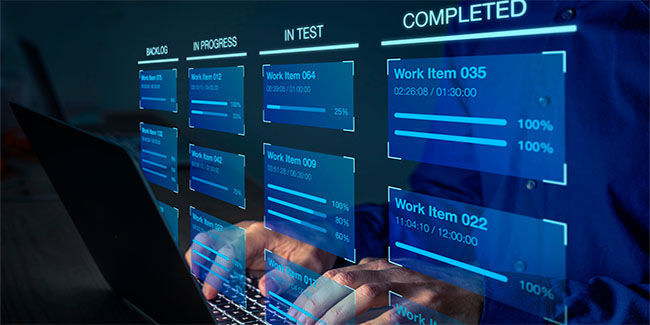

Improving Code Quality and Maintainability: Essential Tips for Developers


When dealing with coding, one of the most important things to consider is not just functionality, but also improving code quality and maintainability! At Introduct, we emphasize not only making the code work but also the quality of the code. By focusing on improving code quality, we eliminate errors and make the user experience more pleasant and comfortable. This blog post was recommended by our Tech Leads and here we’re going to take a look at tips that will help improve code quality and maintainability.
Strategies for Improving Code Quality
One of the important things to do to improve the code quality is to write clean, readable code that is easy to understand for other developers, as we all usually work in teams. Understandable code requires consistency and attention. This allows us to make a clean code.
So, what’s the clean code? It’s the one that is easy to read, understand and modify. It uses recognized standards, utilizes clear and meaningful names for variables and functions, and steers clear of intricate logic structures. But it’s more than following guidelines or practices. It’s about simplicity, clarity, and the joy of finding solutions.
Simplicity is the Key
One of the principles of this strategy is to keep your code simple rather than making it complex. This way, you’ll avoid possible bugs and make it easier for other developers to adjust it. To follow this strategy, you need:
- Clear objectives: Make sure your team members understand the importance of simplicity in software development, making simplicity a primary goal.
- Simple design patterns: Use simple design patterns that help scale and maintain the codebase.
- Simple coding methods: Make sure the team upholds simplicity and clarity in their codebase, steering away from unnecessary complexity and opting for straightforward solutions to challenges.
Modular Approaches to Improve Code Quality
Modular code reduces the complexity of the code, making it small and easy to be reused. This way, the code will be easier to read and less complex. Here are tips that will help in making modular code:
- Identify Code Modules: Start by pinpointing sections of the code suitable for modularization.
- Extract Modules: When potential modular areas are specified, extract them into distinct modules.
- Test Modular Code: Develop a testing strategy to independently test each module, ensuring it functions as intended.
No Repeating Codes
This technique is about making a code that can be reused if needed without creating a duplicate code. That kind of principle looks like modularity in software design, which means breaking the system into smaller parts. Here are some tips on avoiding repeating codes:
- Check code: Use this step to identify repeating code in a project.
- Create a library: Making a library of reusable codes seems like a good idea. Codes in a library may be reused by team members in different projects, which can save a lot of time.
No hard-coded values
Avoid hard-coded values, as they may create confusion and issues in software development. As hard-coded values are a common issue while coding, here are steps that will help you avoid it:
- Use configuration files: Use them to store values that were already used in a codebase.
- Define constants: This will help you to make sure that the value is consistent.
- Environment variables: Try to use environment variables to store values that are specific to this environment.
Version control
This step is a must if you’re a team member. Using version control will help you track code changes, and it also will help you to return to previous changes. To implement version control effectively:
- Choose a version control system.
- Create a repository for your codebase.
- Decide on a branching and merging strategy for the team.
- Use supplementary tools as needed.
Double-check your code to improve quality
While writing code, developers might pay a lot of attention to its functionality rather than its quality. Review the code, make the quality better, simplify it if necessary, and make it more readable. These steps will help you to improve the existing code and avoid issues in the future.
Improve code for performance
This step is one of the most important in code quality. Optimization makes your code run faster using fewer resources. To optimize your code, you need to :
- Use profiling tools that will help to identify slow parts.
- Choose the right algorithm for the specific project and task.
- Use caching to store computations, and reduce I/O operations.
To sum up, writing clean and readable code is one of the most important things while working in software development, promoting the creation of more dependable, manageable, and scalable codebases. These steps while coding will help developers create code that is comprehensible, adaptable, and reusable. This way, developers can be sure that their codes meet all the quality standards.
More Articles

Anticipating Software Development Trends in 2024 Anticipating Software Development Trends in 2024
As we embark on a new year, the software development landscape continues to evolve at a rapid pace, driven by technological advancements, changing consumer preferences, and emerging industry trends. In this blog post, we’ll explore some of the key software development trends to watch in 2024.

Elixir vs Golang: Choosing the Right Language for Gaming Platforms Elixir vs Golang: Choosing the Right Language for Gaming Platforms
GoLang or Elixir? When it comes to developing gaming platforms, the choice of programming language can significantly impact performance, scalability, and development speed. In this blog post, we’ll compare two popular languages, Elixir and Golang, and explore their suitability for building gaming platforms.
